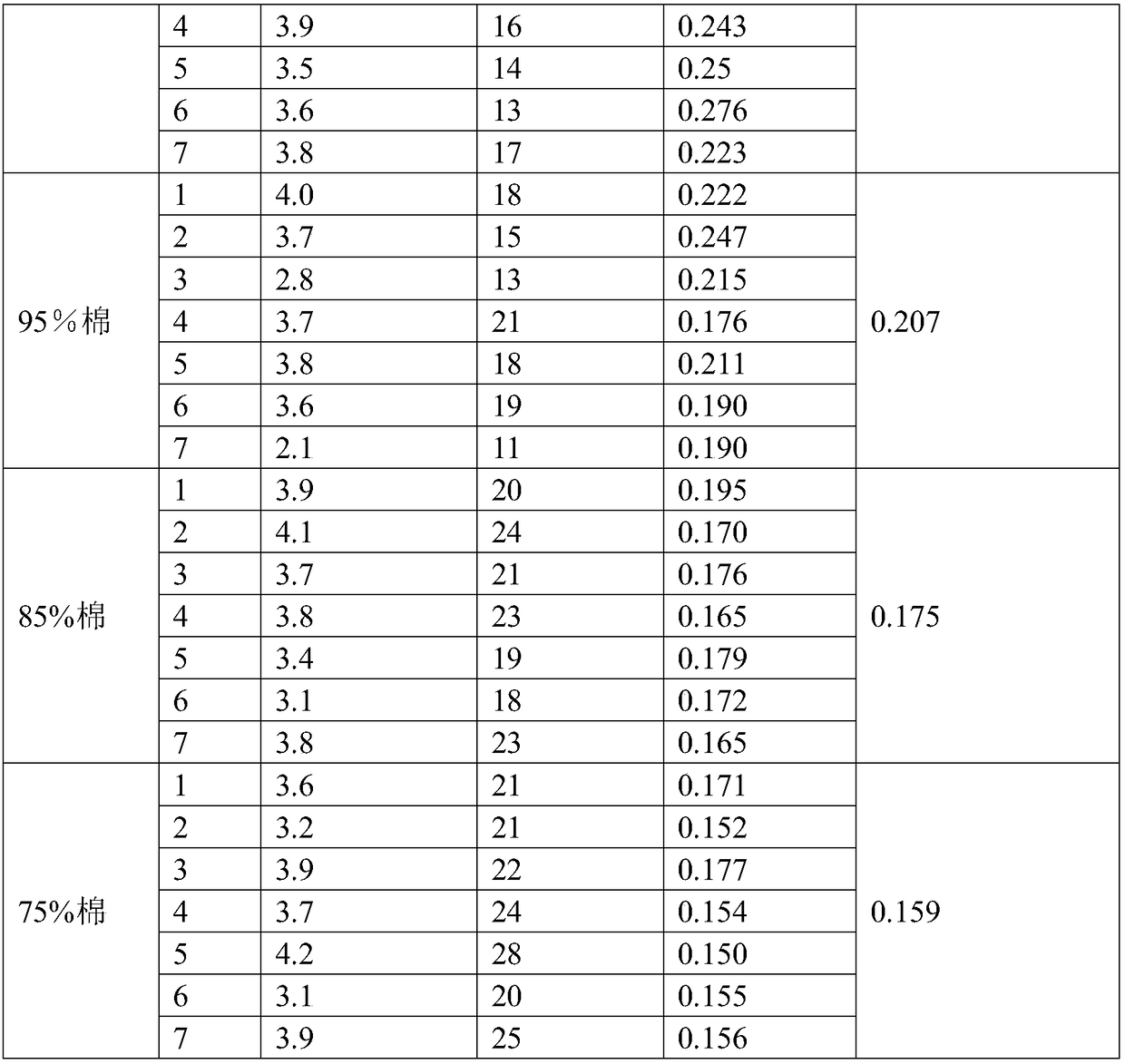Method for detecting cotton content of fabric
A technology of cotton content and fabric, applied in the direction of chemical analysis by titration method, can solve the problems that samples cannot be reused, easily cause skin allergies, damage identification, etc., to prevent severe allergies, scientific and rigorous experimental logic, short-lived effect
- Summary
- Abstract
- Description
- Claims
- Application Information
AI Technical Summary
Problems solved by technology
Method used
Image
Examples
Embodiment 1
[0029] A method for detecting the cotton content of cloth is characterized in that it comprises the following steps:
[0030] Step 1) Preparation of standard samples: take light-colored cloths with cotton content of 100%, 95%, 75%, and 0% respectively to obtain standard samples;
[0031] Step 2) Titration of the cloth standard sample: determine the titration point on the cloth standard sample in the step 1), draw a certain titration solution with a capillary pipette, vertically stand the capillary above the titration point, and make the lower part of the capillary contact with the titration point surface , and start timing, record the height of the capillary liquid column, and calculate the titration per unit time by this method, which is the titration rate;
[0032] Step 3) detection of the cloth to be tested: take the cloth to be tested, and titrate the cloth to be tested according to the method of step 2), so as to obtain the average titration rate of the cloth to be tested...
Embodiment 2
[0043] A method for identifying the cotton content of cloth, the method comprising the following steps:
[0044] Step 1) standard sample making: take the cloth whose cotton content is known, clean it up, and obtain the cloth standard sample;
[0045] Step 2) titration solution selection: aqueous solution;
[0046] Step 3) titration of the cloth standard sample: determine the titration point on the cloth standard sample of the described step 1), draw the titration solution of the described step 2) with a capillary tube with a length of 100mm, vertically stand the capillary above the titration point, make The lower part of the capillary contacts the surface of the titration point, starts titration and timing, records the titration amount per unit time, and calculates the titration rate of the standard sample cloth;
[0047] Step 4) Detection of the cloth to be tested: take the cloth to be tested, according to the method of the step 1) to the step 3) of the cloth to be tested, i...
Embodiment 3
[0053] Titration rate of cloth with different cotton content,
[0054] The method of Example 1 is used to titrate cloths with different cotton contents, and the titration rates of different cloths are shown in Table 1. Since the main component of cotton is cellulose, which contains hydrophilic pores, the more hydrophilic pores, the better the water absorption. Compare the average titration rates of several fabrics with different cotton contents in Table 1. The average titration velocity of 100% cotton is 0.2435cm / s, the average titration velocity of 95% cotton is 0.207cm / s, the average titration velocity of 85% cotton is 0.175cm / s, and the average titration velocity of 75% cotton is 0.159cm / s s, which shows that the titration rate of the four fabrics is proportional to the cotton content.
[0055] Table 1 Titration rate of fabrics with different cotton content
[0056]
[0057]
PUM
 Login to View More
Login to View More Abstract
Description
Claims
Application Information
 Login to View More
Login to View More - R&D
- Intellectual Property
- Life Sciences
- Materials
- Tech Scout
- Unparalleled Data Quality
- Higher Quality Content
- 60% Fewer Hallucinations
Browse by: Latest US Patents, China's latest patents, Technical Efficacy Thesaurus, Application Domain, Technology Topic, Popular Technical Reports.
© 2025 PatSnap. All rights reserved.Legal|Privacy policy|Modern Slavery Act Transparency Statement|Sitemap|About US| Contact US: help@patsnap.com


